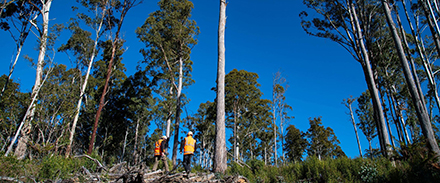As Tasmanians prepare to cast their votes in the upcoming elections, the significance of timber forestry looms large on the political landscape, with candidates and parties grappling to articulate its pivotal role.
Forestry has long been the economic backbone of Tasmania, contributing significantly to the state’s GDP and providing employment opportunities for thousands of Tasmanians, particularly in rural areas where alternative industries are limited. From the logging of native forests to the cultivation of plantation timber, forestry activities span a wide spectrum, generating revenue not only through timber production but also through associated sectors such as manufacturing, transportation, and tourism.
The industry’s economic importance extends beyond direct employment, with flow-on effects felt across various sectors of the economy. Sawmills, paper mills, and wood processing facilities rely on a steady supply of timber, while transport companies ferry logs and timber products to domestic and international markets.
Moreover, forestry-related tourism, including eco-tours and wilderness experiences, attracts visitors eager to explore Tasmania’s natural beauty, further bolstering the state’s economy.
For many Tasmanians, timber forestry is not just an economic activity, but a cultural heritage deeply ingrained in the state’s identity. Generations of Tasmanians have grown up in forestry-dependent communities, where the rhythms of life are intertwined with the cycles of logging and timber processing.
The sight of logging trucks rumbling down winding roads, the smell of sawdust in the air, and the sound of chainsaws echoing through the forests evoke a sense of familiarity and belonging for many residents.
Moreover, forestry plays a crucial role in preserving and promoting traditional skills and knowledge passed down through generations. From bushcraft and timber milling to forest management and conservation practices, forestry fosters a sense of pride in Tasmania’s rural communities, connecting them to the land and its resources in profound ways.
Fortunately, Tasmania has made significant strides in implementing sustainable forestry practices in recent years, including the establishment of comprehensive forest management plans, certification schemes, and conservation reserves. By adopting selective logging techniques, reforestation initiatives, and habitat restoration programs, the forestry industry seeks to minimize its ecological footprint while ensuring the long-term viability of Tasmania’s forests for future generations.
In the context of elections, candidates and parties must navigate the complex terrain of timber forestry, addressing concerns related to both economic growth and environmental conservation.
Proposals for forestry policy reform must strike a delicate balance between supporting the industry’s economic contributions, preserving Tasmania’s cultural heritage, and safeguarding its natural environment. Ultimately, the vitality of timber forestry in Tasmania’s elections underscores its multifaceted significance, serving as a cornerstone of the state’s economy, culture, and environmental stewardship alike.
While both the Liberal and Labor parties recognize the significance of timber and forestry to Tasmania’s economy and society, their policy approaches diverge on key issues such as environmental conservation, industry regulation, and community engagement.
The Liberal Party prioritizes economic growth and industry expansion, advocating for a more permissive regulatory environment and greater reliance on native forest resources.
In contrast, the Labor Party prioritizes environmental sustainability and community well-being, favouring stricter conservation measures, diversification strategies, and indigenous empowerment within the forestry sector.
In the lead-up to elections, voters will need to carefully weigh these competing policy platforms and consider their implications for Tasmania’s future. The choice between the Liberal and Labor parties’ forestry policies will not only shape the trajectory of the timber and forestry sector but also influence the broader social, economic, and environmental landscape of the state for years to come.







